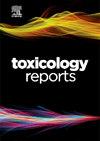娱乐性氯胺酮使用的发病率上升:临床病例和紧急情况下的管理
Q1 Environmental Science
引用次数: 0
摘要
在荷兰,氯胺酮的娱乐性使用显著增加,尤其是在夜生活场所的年轻人中。伴随这一趋势的是涉及氯胺酮的急救事件的增加,通常与酒精或MDMA等其他物质结合使用,导致毒性增加。氯胺酮急性中毒表现为躁动、幻觉、恶心、心动过速和高血压等症状,而频繁使用氯胺酮与长期并发症有关,包括氯胺酮引起的尿病。虽然氯胺酮目前不包括在标准毒理学筛查中,但它的检测可以帮助诊断混合性中毒,排除其他原因,并促进转诊到后续护理。将氯胺酮常规纳入毒理学筛查可以提高诊断准确性,并更好地解决与氯胺酮日益流行相关的健康风险。本文章由计算机程序翻译,如有差异,请以英文原文为准。
Rising incidence of recreational ketamine use: Clinical cases and management in emergency settings
The recreational use of ketamine has risen significantly in the Netherlands, particularly among young adults in nightlife settings. This trend has been accompanied by an increase in first aid incidents involving ketamine, often in combination with other substances such as alcohol or MDMA, leading to heightened toxicity. Acute intoxication with ketamine manifests through symptoms like agitation, hallucinations, nausea, tachycardia, and hypertension, while frequent use is associated with long-term complications, including ketamine-induced uropathy. Although ketamine is not currently included in standard toxicological screenings, its detection can aid in diagnosing mixed intoxications, excluding alternative causes, and facilitating referral to follow-up care. Routine inclusion of ketamine in toxicological screening could improve diagnostic precision and better address the health risks associated with its growing prevalence.
求助全文
通过发布文献求助,成功后即可免费获取论文全文。
去求助
来源期刊

Toxicology Reports
Environmental Science-Health, Toxicology and Mutagenesis
CiteScore
7.60
自引率
0.00%
发文量
228
审稿时长
11 weeks
 求助内容:
求助内容: 应助结果提醒方式:
应助结果提醒方式:


